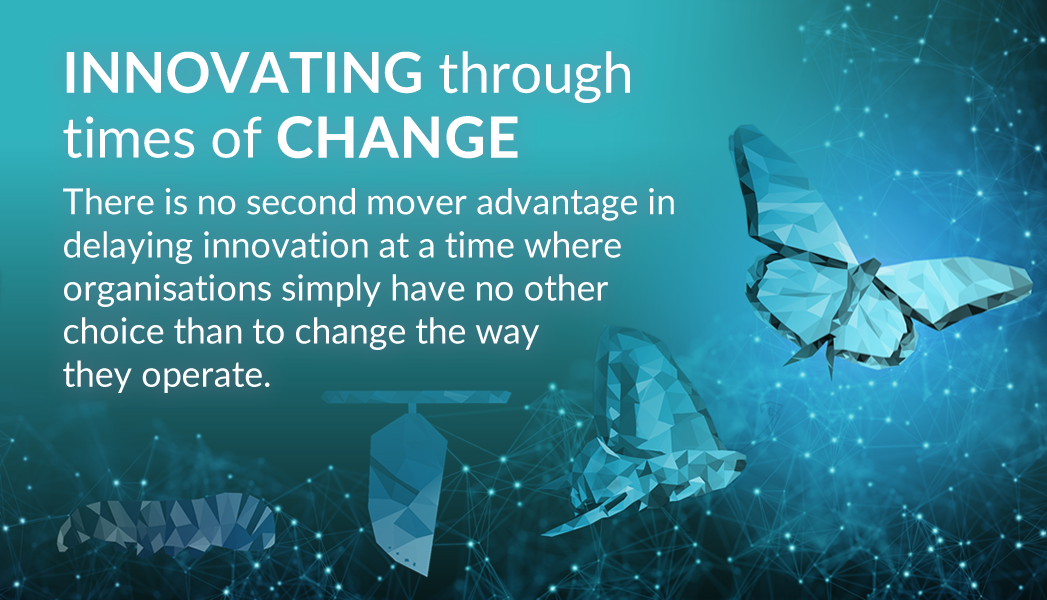
You've heard people talking about automation, but most likely you've got some questions. The ones I hear most often are "How can my business benefit from automation?" (or I get told that the business can't benefit) and "How do I even start?!".
Over the next few minutes I'm going to show you how not only can your business benefit from automation, but also how you can get started.
Identifying pain
The very first thing you need to do is figure out where your business can benefit from automation. Most companies don't have the kind of data available in a format that allows them to analyse this easily, so I often start with what I call anecdotal evidence. It's not confirmed, but most of us have a good sense of our business or our role within it. We might not be able to see outside of that bubble so it's important to do this company-wide to get a really good playing field.
Now you need to ask everyone some questions (if you're a large company, you should break this down into smaller groups - perhaps by department, or by some other aspect in how you work):
- What are the things in your day to day working life that frustrate you, which would provide less stress if you didn't have to do them?
- Which aspects of your work are repetitive and boring; and perhaps most importantly
- Which aspects of your work do you make the most mistakes in?
That last one is important, but it needs to be asked with kindness - you're not trying to berate someone for making mistakes. We're only human after all. Alexander Pope gave us the famous saying "to err is human; to forgive is divine", and it's really important to hold that close when you ask questions of this nature.
Make a big list - put it on a wall chart or some shared document so you can all collaborate together on this. We often use Trello boards, particularly at the moment when we have to be remote from our clients.
Calculating value
Now you've got a big list of things that you and your team could do to remove from their day to day working lives and automate with software. This is usually where the question "How do I decide where to start?" gets asked. Now you've got your list, this bit is surprisingly easy to figure out. There are three parts to calculating value: Direct savings, opportunity cost and indirect savings. Whilst I'm probably teaching grannies to suck eggs, for those that haven't done this before, I'll explain each one in a little more detail, and this will start to help prioritise what you do first.
You'll need to do this for each item on the list; it's a lot easier than it seems though, so don't be daunted.
Direct Savings
For any item in the list, the direct savings are calculated in time and money saved. Ask the person or team who brought the item to your attention to answer: "How much time do you spend doing this thing in a day/week/month?". Back that off to 80% (follow the Pareto principle and aim for solving 80% of the problem. Anything over is a bonus). So if it takes 10 hours a week, work it all out based on getting 8 of those back.
Let's take those 8 hours. How much does 8 hours cost? Let's say you pay your staff £15 per hour, those 8 hours cost you £120 if one person is involved in that process. Multiple as appropriate for your situation. Clearly this is a simplification, but hopefully the intent is clear.
On top of that, what are your fixed overheads for those 8 hours? That's possibly harder to quantify, but if you're able to, add this into your direct savings, because the theory is that you don't have to spend that money on those 8 hours any more (at least for the purpose of doing this specific job). That might be training, computer costs, office costs, paper (you might not need it any more if you print a lot) and so on.
Work it all out over 3 years. So if we ignore the fixed overheads, that means we're saving £18,720 over a 3 year period for this specific job.
Now you've got this, order your list based on the direct savings. That's where a spreadsheet is probably really useful. You'll see very quickly where you can get the most benefit in the way of direct savings and that's a brilliant starting point. But that's not the end of the process.
Opportunity Cost
This aspect of calculating value is as important as the direct savings. Most businesses are interested in growth, but growing costs money, so having more time means less money required to grow, and therefore more profit available. Ask yourselves "If I didn't have to do this job, how much more work could I undertake?" and put a monetary value on that - it will literally be how much more business you can bring in to fill that time back up. Back it off by 20% so you follow the Pareto principle again. We've got clients who have been able to increase sales nearly 10-fold through automation, but we only arrived at that by doing this exercise. At that point, the return on investment is clear.
Once you've got this, you can add that opportunity cost to the direct savings. Sort your spreadsheet again by the sum of the two.
Indirect Savings
By far and away the most difficult aspect to calculate are the indirect savings you get from this kind of work. When we work with clients, they often find they have to hire fewer people which means lower fixed overheads, training and recruitment costs as well as the time that a new member of staff requires to get up to speed with things (that's about 8 months per new starter). On top of that, the time saved will result in lower stress levels and better personal wellbeing, and that will almost always translate into better productivity per person in the team.
I like to think about the indirect savings as the icing on the cake. You don't need them to make the value proposition stand up, but when you see them, you wouldn't want to be without them.
To give you an indication of how much value this adds, one of our clients who went through this exercise calculated their average productivity levels were around 2.5 hours per person per day. Following implementation of a bespoke system that saved them 90% of their time (which resulted in a 9.72x increase in capacity without hiring any more people), they discovered their productivity almost doubled overnight, translating into a total increase in capacity of nearly 18 times. Imagine being able to turn over 18 times more business than you did last year without hiring any more staff!
Getting buy in
Finally, we get on to the trickiest part of all. If you've followed the steps above you're probably 80% of the way there already. You've engaged with your team and you've given them control. As humans we're socially conditioned to believe that people don't like change. That's bunkum. The truth is we all love change, but we only do so on our own terms. If it's on someone else's, we find ourselves fighting against it no matter how good the change actually is for us.
The problem is that to get automation to really benefit your business and the people in it, everyone has to be all-in. Otherwise it just won't work. So to get people to buy in, we need to do things on their terms. That's why we ask about the things that frustrate them individually, and then we solve those problems for them.
The biggest fear people have is that they are going to lose their job to a machine. At Initforthe, we have strong principles in that regard. If you're looking to cost cut the people out of your business, do not approach us to help you. On the other hand, if your intent is to grow and keep the knowledge that those people have to help you grow quicker, then we're all ears.
The truth is that people don't have to lose their jobs to machines. Sure, the nature of their work will change with a machine doing all the boring stuff, but that's only going to enable that person to use their brain (pro tip: we're really good at critical and lateral thinking, and really bad at repetitive tasks; computers are exactly the opposite of that), and will engage them far more in the business than any other job ever will.
Now what?
So you've figured out where the value lies. The only thing you don't know about that is how much it costs, so you don't have your specific return on investment. We can help with that, by helping you plan and develop a bespoke software platform that answers the problems you've found. That's the final sort - which one thing on your list gives you the fastest and biggest ROI? That's your starting point.
Some things you'll be able to automate using tools like Zapier, but truth be told, you'll quickly run up against barriers that don't really match the way you want your business to run. The most dangerous thing you can do in your business is change your processes to match an off-the-shelf system. At some point the vendor will either go away, change the process, or you'll change system, and you will lose your advantage all over again.
Moreover, your business is unique precisely because of your processes and people. Please keep that uniqueness - it's what got you going in the first place and it's the thing that will help you grow tomorrow. That's where a bespoke app comes in. It will do what you want, in the way you want to do it, and you can encapsulate your business processes in it so it does them instead of your team and it always gets them right.
This was originally posted on the Initforthe Blog at https://initforthe.com/blog/how-to-get-started-with-automation-in-your-business.









